 By Bob Turknett
By Bob Turknett
My wife and business partner, Lyn, often quotes Frances Hesselbein, whose guiding philosophy is: “leadership as not a matter of how to do, but rather a matter of how to be.” Hesselbein transformed the Girl Scouts and later ran the Peter F. Drucker Leadership Institute.
Drucker, often viewed as the founding father of management, proclaimed Frances Hesselbein “the best CEO in America,” and that she could manage any company in America. Drucker said that when Frances Hesselbein talks about “how to be,” she is talking about Character, “which is something all of us have to work on every day of our life!”
All teams usually experience Bruce Tuckman’s classic stages of forming, norming, storming, and performing. However, executive teams that become exceptionally high performing have something very special. According to Harvard researcher Robert Kegan’s 5 stages of growth, a leader needs to get close to stage 5 growth for maximum effectiveness. And, that means then, for a team to achieve maximum effectiveness, each member must be working on individual development.
Lyn and I created a
Leadership Character Model™ (LCM) in 1995 to provide the leaders we were working a framework for developing Frances Hesselbein’s “how to be.” It has been our experience that to develop the qualities in the LCM to the fullest requires individual development over time.
In coaching executives and executive teams for over 30 years, the teams that performed at the highest level engaged in both individual coaching and team coaching simultaneously for at least a year. The individual development sessions were absolutely essential for each team member to accelerate their personal growth, making it possible for the team to accomplish goals that wouldn’t have been achievable otherwise.

 By Bob Turknett
My wife and business partner, Lyn, often quotes Frances Hesselbein, whose guiding philosophy is: “leadership as not a matter of how to do, but rather a matter of how to be.” Hesselbein transformed the Girl Scouts and later ran the Peter F. Drucker Leadership Institute.
Drucker, often viewed as the founding father of management, proclaimed Frances Hesselbein “the best CEO in America,” and that she could manage any company in America. Drucker said that when Frances Hesselbein talks about “how to be,” she is talking about Character, “which is something all of us have to work on every day of our life!”
All teams usually experience Bruce Tuckman’s classic stages of forming, norming, storming, and performing. However, executive teams that become exceptionally high performing have something very special. According to Harvard researcher Robert Kegan’s 5 stages of growth, a leader needs to get close to stage 5 growth for maximum effectiveness. And, that means then, for a team to achieve maximum effectiveness, each member must be working on individual development.
Lyn and I created a Leadership Character Model™ (LCM) in 1995 to provide the leaders we were working a framework for developing Frances Hesselbein’s “how to be.” It has been our experience that to develop the qualities in the LCM to the fullest requires individual development over time.
In coaching executives and executive teams for over 30 years, the teams that performed at the highest level engaged in both individual coaching and team coaching simultaneously for at least a year. The individual development sessions were absolutely essential for each team member to accelerate their personal growth, making it possible for the team to accomplish goals that wouldn’t have been achievable otherwise.
By Bob Turknett
My wife and business partner, Lyn, often quotes Frances Hesselbein, whose guiding philosophy is: “leadership as not a matter of how to do, but rather a matter of how to be.” Hesselbein transformed the Girl Scouts and later ran the Peter F. Drucker Leadership Institute.
Drucker, often viewed as the founding father of management, proclaimed Frances Hesselbein “the best CEO in America,” and that she could manage any company in America. Drucker said that when Frances Hesselbein talks about “how to be,” she is talking about Character, “which is something all of us have to work on every day of our life!”
All teams usually experience Bruce Tuckman’s classic stages of forming, norming, storming, and performing. However, executive teams that become exceptionally high performing have something very special. According to Harvard researcher Robert Kegan’s 5 stages of growth, a leader needs to get close to stage 5 growth for maximum effectiveness. And, that means then, for a team to achieve maximum effectiveness, each member must be working on individual development.
Lyn and I created a Leadership Character Model™ (LCM) in 1995 to provide the leaders we were working a framework for developing Frances Hesselbein’s “how to be.” It has been our experience that to develop the qualities in the LCM to the fullest requires individual development over time.
In coaching executives and executive teams for over 30 years, the teams that performed at the highest level engaged in both individual coaching and team coaching simultaneously for at least a year. The individual development sessions were absolutely essential for each team member to accelerate their personal growth, making it possible for the team to accomplish goals that wouldn’t have been achievable otherwise. 
